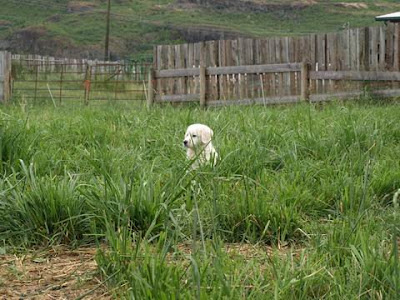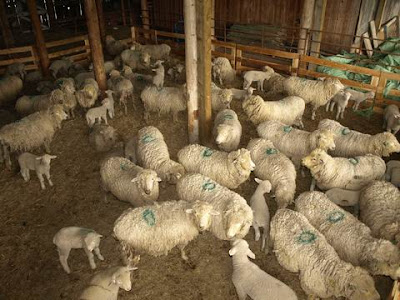

We put the rams into breed on 5th November, so we should have April Fools lambs, 1st April. As a breeding cycle is 17 days and we expose the ewes for two cycles lambing should be all over by 5th May or there abouts. Trouble is as we were breeding some Tegs (ewe lambs) I decided to hold them back a cycle, so giving them two cycles means lambing will not be over till around 22nd May. It will make for a busy spring with lambing, gardening and grazing. We split the flock into three groups and a ram for each. The Suffolks had a Suffolk ram as we hope to save some ewe lambs for breed stock and the rest went to Dorset terminal sires.
We have had a very mild fall and only just had snow so it has been great to catch up with out side work. Cooler weather is needed as it is starting to get muddy,so be careful what you ask for, next week is supposed to get down to -22c, oh well no more mud at least!
Two days ago we pulled two of the rams out from their girls and put both flocks together, that should ease the work load and give Rosa one less field to go to. Hope fully all the girls are breed, we will pregnancy scan in February and know for sure then.
One of the biggest expenses in the operation is milk powder for orphan lambs, back at our old ranch when we ran a big flock I always milked some goats as the milk was better than powdered milk and cheaper as the goats were also raising their own kids as well as a couple of lambs each. Finding milk goats in BC is another task altogether, we did find 3 bred Toggenbergs (my favorite dairy breed) about an hour away last week so we took the trusty Volvo station wagon and hauled them home. Molly,Mandy and Misty are due in March ahead of the ewes which should work out just nicely, giving their kids a good start before raising a lamb or two as well.

























































